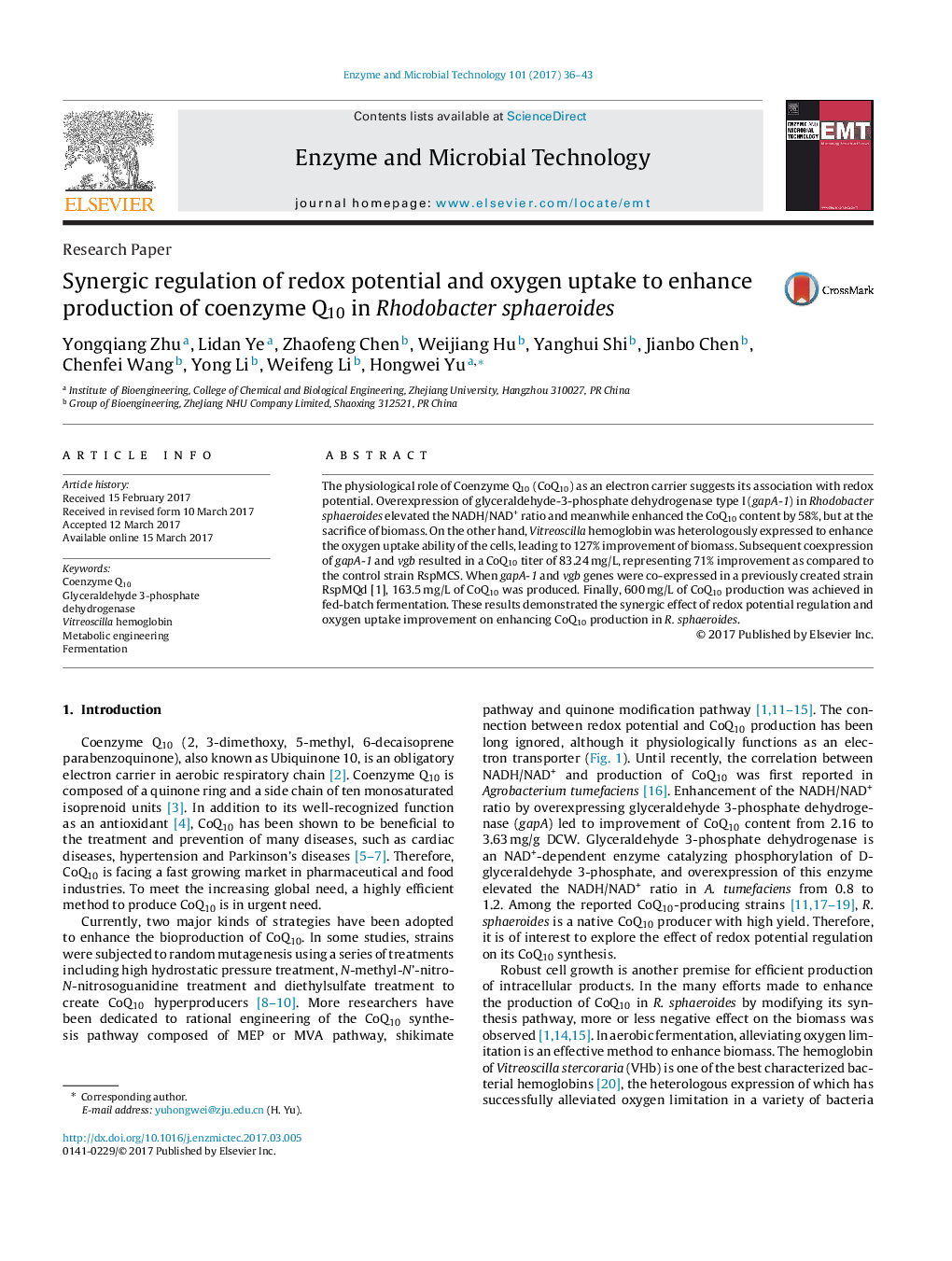| Article ID | Journal | Published Year | Pages | File Type |
|---|---|---|---|---|
| 4752772 | Enzyme and Microbial Technology | 2017 | 8 Pages |
â¢Enhanced CoQ10 production in R. sphaeroides by a novel synergic regulation method.â¢Overexpression of gapA-1 effectively improved the CoQ10 content in R. sphaeroides.â¢The order of gapA-1 and vgb in polycistrons influenced both cell growth and activity.â¢Highest CoQ10 production among R. sphaeroides constructed by metabolic engineering.
The physiological role of Coenzyme Q10 (CoQ10) as an electron carrier suggests its association with redox potential. Overexpression of glyceraldehyde-3-phosphate dehydrogenase type I (gapA-1) in Rhodobacter sphaeroides elevated the NADH/NAD+ ratio and meanwhile enhanced the CoQ10 content by 58%, but at the sacrifice of biomass. On the other hand, Vitreoscilla hemoglobin was heterologously expressed to enhance the oxygen uptake ability of the cells, leading to 127% improvement of biomass. Subsequent coexpression of gapA-1 and vgb resulted in a CoQ10 titer of 83.24Â mg/L, representing 71% improvement as compared to the control strain RspMCS. When gapA-1 and vgb genes were co-expressed in a previously created strain RspMQd [1], 163.5Â mg/L of CoQ10 was produced. Finally, 600Â mg/L of CoQ10 production was achieved in fed-batch fermentation. These results demonstrated the synergic effect of redox potential regulation and oxygen uptake improvement on enhancing CoQ10 production in R. sphaeroides.
